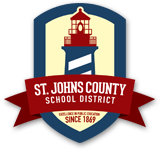Improving Reading Skills in Science
Texts in science challenge students with technical vocabulary, detailed concepts and relationships and multi-step processes and cycles. Learn effective strategies for helping students with each of these issues.
Effective reading and science teachers integrate the acquisition of skills with the understanding of content. Science teachers can build on this to help their students become more proficient readers.
Reading Basics
To begin, teachers can help student improve comprehension by equipping them with some basic information.
- Tell students why they are reading a given text.
- Orient their purpose towards answering an essential question, such as, “Why are leaves green?” or “Why does the moon appear to change shape?”
- Connect prior learning and background knowledge to reading. Help students apply this essential information with KWL charts and pre-reading discussions.
Vocabulary Strategies
Science vocabulary can be daunting for students, particularly for those with poor literacy skills.
- Focus on vocabulary prior to reading. When possible, link the new term to an experiment, diagram, demonstration, piece of equipment, or prior learning experience.
- Make dictionaries available. If possible, have a dictionary on each desk during reading assignments.
- Teach students to use the dictionary when they encounter the first unknown word. Skipping unknown words in hopes of defining them through context reduces science literacy.
- Have students create “Science Signs,” or flash cards for new vocabulary. Put the term on the front. The definition and a sentence or representative diagram should go on the back, as well as any information which links this term to prior or concurrent learning.
- Manage a “Science Sign Sort” activity. Have students create categories and sort their Science Signs of both new and mastered vocabulary appropriately.
Detailed Concepts and Relationships
Reading about complicated science concepts, such as the laws governing genetics and inherited traits, requires concentration and focus from even the best readers. Consider these strategies for addressing this issue.
- Manage reading assignments with purpose. Make sure students know why they are reading given passages.
- Provide guidelines about specific areas of focus and goals for reading.
- Teach students to use text clues to identify critical information. Titles, subheadings, paragraph groupings, graphics, and summary statements are used by writers to organize information. Understanding this structure can help students manage their reading.
- Encourage questioning and hypothesis formation during reading. Ask students to jot down questions or ideas which occur to them while reading.
- Provide time to discuss their thoughts.
- Teach students to look for key terms which imply relationships between variables. Words like “since,” “when,” “affect,” “consequently,” “although,” “effect,” “if,” and “because” signal the discussion of related variables.
- Evaluate student comprehension frequently throughout a series of reading assignments using a variety of methods. Have students describe the new concept through a diagram, graph, hands-on demonstration, or journal entry.
Multi-Step Processes and Cycles
Many science concepts revolve around a sequence or cycle of events. Comprehending multiple steps in sequential order requires a different type of reading approach. Below are some strategies which can provide assistance with this issue.
- Preview text structure with students. Identify text cues which indicate the beginning, middle, end, or key parts of a sequence.
- Increase student interaction with the reading. Group discussion, problem solving, and hands-on activities related to the reading can increase responsiveness and motivation.
- Have students create flow charts, diagrams, and sketches. Creating physical representations of written steps can increase retention of sequential information.
- Break the reading of long sequences into smaller numbers of steps. Assign a small portion of text, then pause for discussion and questions.
- When possible, have students predict further steps in the sequence before moving forward.
- Utilize student-created Science Signs to sequence key steps in a process or cycle. The visual and tactile components of this type of activity can increase retention of sequential information.
Resources:


